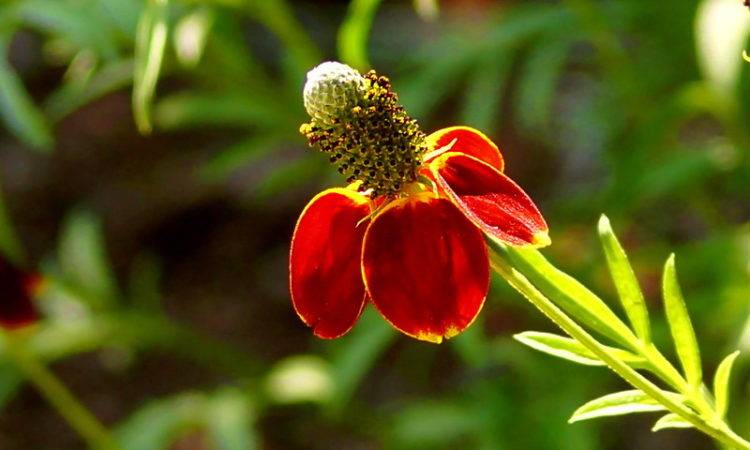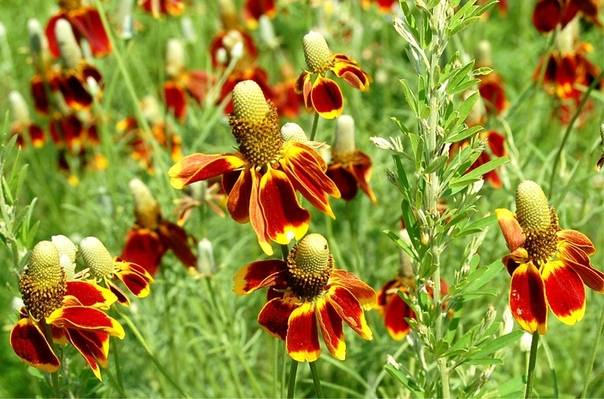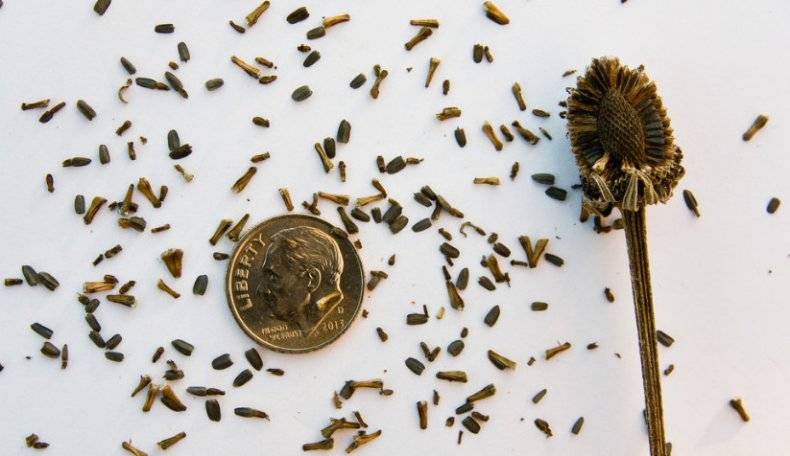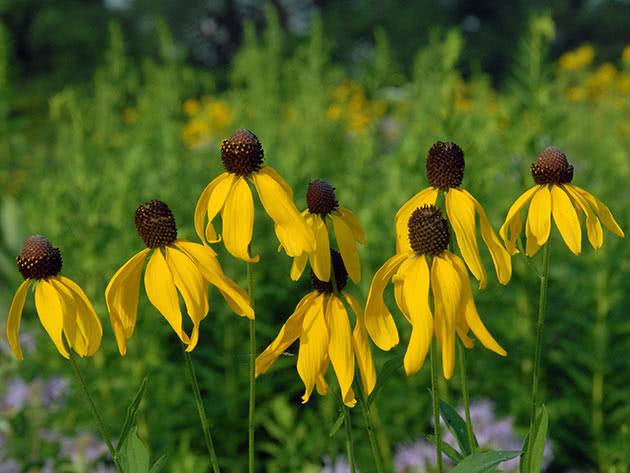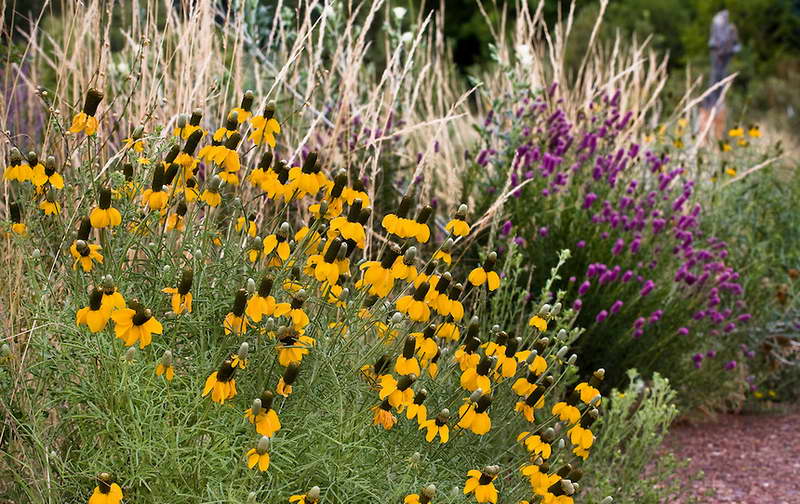Ratibida columnifera care
Content:
Ratibida is a sun-loving plant belonging to the Astrov family. Since caring for it is not difficult, it can often be found in flower beds and mixborders, not only in gardens, but also in city squares and parks.
Description of the flower
The first mention of this flower dates back to the beginning of the 19th century. It was discovered by the American naturalist KS Rafinesk-Schmalz during one of his scientific expeditions to the Great Plains. The scientist carefully studied the plant, described and named it.
Straight, with sparse branches, flower stems are covered with small lanceolate leaves, which, depending on the species, can be either silvery green or dark green.
Habitat
The natural habitat of this spectacular plant is very extensive: from the cool hills of Canada to the hot prairies of Mexico. This means that the Mexican hat can tolerate dry and dry as well as cool climates.
Common types
Ratibida sombrero cannot boast of outstanding species diversity. Today, 7 species are known, of which two are most popular: columnar ratibid Conflover and pinnate ratibid.
Ratibida columnar Conflover is the most famous and widespread plant species with large flowers. In diameter, they can reach 8-10 cm. The stem is very hard, slightly pubescent, the leaves are sparse gray-green. The stems of this flower can grow up to 1 m in length.
On the basis of the wild species of ratibids, breeders managed to develop a sub-variety, which were named fine ratibid (var. Pulcherrima), Yellow Cheyenne ratibide, Red Midnight ratibide.
Cirrus (Ratibida pinnata) is distinguished by elongated petals and a modest spherical core. The flower is very similar to rudbeckia and is often confused. In addition, the stems of the pinnate ratibide are much longer than the columnar ratibide and can reach 1.5 m.
Reproduction of ratibide
There are several ways to breed this spectacular perennial. Growing ratibide columnar Mexican hat from seedlings is the easiest and most suitable method for temperate climates.
Seed propagation
About a month before planting, in February, the seed is cold stratified. This will allow the seeds to germinate faster. In March, seeds are sown on the surface of a moistened soil. The box is placed in a well-lit, draft-free place and covered with a garden hood. The optimum temperature for germination should be at least 20 ° C. It is necessary to moisten the seedlings as the soil dries up and preferably from a spray bottle. Condensation should not be allowed under the hood.
After about a month, after the seedlings get stronger, they must be transferred to a permanent place in open ground. Young plants are planted only in well-prepared soil.It is better if the place for placing this flower is prepared in the fall. To do this, you need to dig up the ground well, adding a little ash, compost and river sand to it to increase air permeability. In addition, you need to take care of drainage or drainage.
Seedlings are planted at a distance of 30-35 cm from each other, trying not to damage the roots. At the time of final rooting, young shoots should be covered overnight to avoid freezing.
Planting seeds in open ground
You can try to grow this flower by sowing the seeds directly into the open ground. This method has its advantages: the fragile roots of the plant will not be at risk of damage during transplantation, as in the first case. The most favorable time for sowing ratibid seeds is early April. Seeds are placed in furrows to a depth of no more than 2 cm in increments of 25-30 cm and sprinkled with medium-fraction sand.
Reproduction by dividing the bush
Reproduction of ratibide can be done by dividing the bush. This is all the more advisable if the perennial has been growing on the site for a long time. The fact is that every 2-3 years this flower needs rejuvenating transplants, so you can easily combine these two tasks. However, you should be careful when dividing the bush directly due to its fragile root system and, if possible, do not expose the root, keeping an earthen lump.
Propagation by cuttings
Cutting is another, albeit not very popular, way of breeding ratibide. It is best to grow a flower from cuttings in May or early June, when there is no night frost. Side shoots of the plant are perfect for obtaining planting material. They are planted directly into the ground, which is covered with sand. The cuttings should be covered with a garden hood to create a greenhouse effect. After about two weeks, the cuttings will form their own root system, and there will be no need for a cap anymore.
Preparing for winter
Preparation for the winter of the Mexican hat begins when the plant has completely bloomed and dried, and the core changes color from silvery green to dark brown. This means it's time to cut the fruit - small bolls - and collect the seeds. After the seeds are harvested, the stems should be removed by cutting them flush with the ground. Due to the fact that this plant is able to withstand even the most severe frosts, it does not need insulation measures.
Ratibida: planting and care
Planting and caring for ratibid is not a particularly difficult process. They boil down to the fact that faded flowers are removed in time, and the soil around the bush is regularly loosened and freed from weeds.
Choosing a landing site
The choice of a place for planting this plant should be done on the basis that the ratibide is extremely sun-loving. Open and well-heated areas of the southern and western locations are best suited.
Watering and feeding
It is necessary to specially water the ratibida only in two cases: if the weather is dry and after weeding. The rest of the time, moisture requirements will be easily met by precipitation. Frequent fertilization is also not required and can even contribute to the growth of foliage instead of active budding.
It is enough to feed the plant twice a season. The first time fertilizers are applied 7 days after planting the planting material in the ground, the second time - during the active growing season. For feeding, you should choose universal mineral complexes.
Diseases and pests
As a rule, the Mexican hat almost does not suffer from diseases and is rarely attacked by insects.At times, the flower can be affected by all sorts of garden spots and, which is extremely rare, powdery mildew. In this case, it is necessary to remove all areas infected with the disease and spray the plant with a fungicide.
If, when preparing the site for planting the ratibide, little attention was paid to drainage, then the plant may suffer from decay of the root system. Unfortunately, this process is irreversible. In this case, the bush should be removed, work should be done to improve the drainage system, and only after that a new flower should be planted in this place.
Ratibida in landscape design
Before planning the inclusion of ratibide in the landscape design of the garden, it should be borne in mind that this flower is able to quickly spread by self-sowing and gradually displace other ornamental crops on the site. If this can be taken under control, then the flower will look great in mix compositions with rudbeckia, chamomile, aster. In addition, ratibida will work well with some undersized shrubs.
Ratibida, Mexican hat, sombrero - it's all about her, the beautiful representative of the Astrovs. A free and strong flower can become a wonderful addition to any garden and delight with its unusual appearance throughout the summer season.
